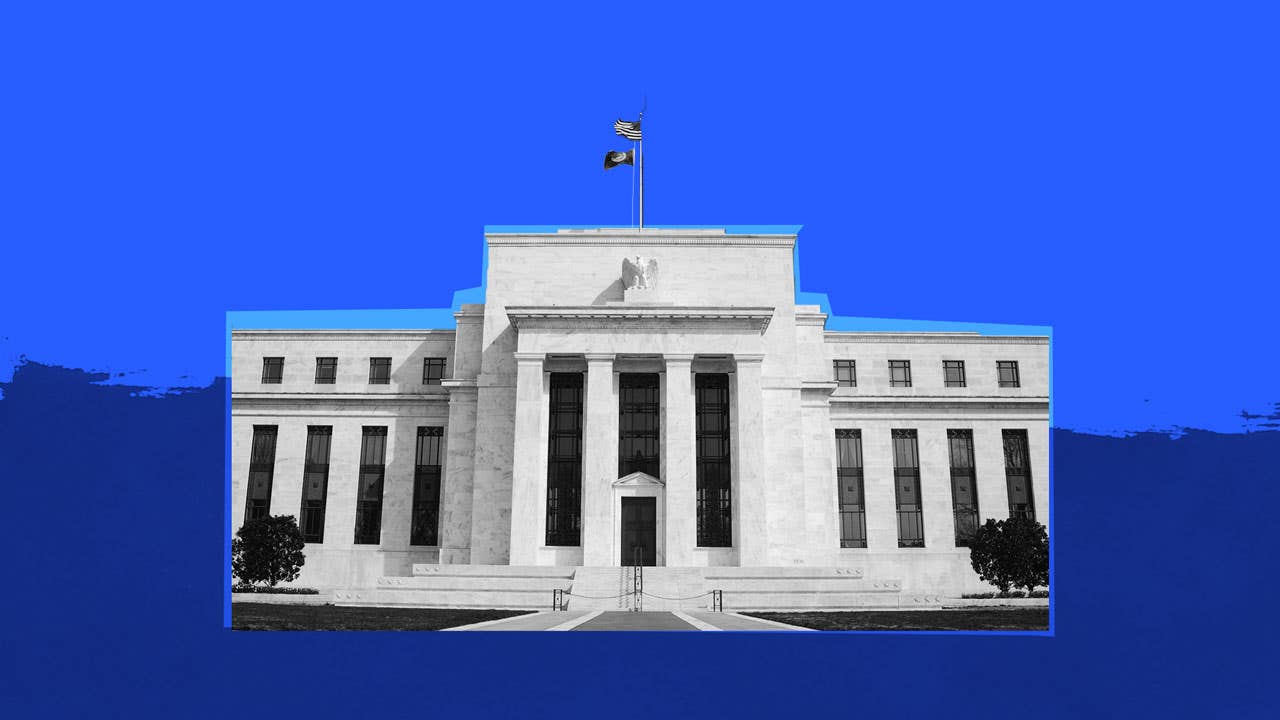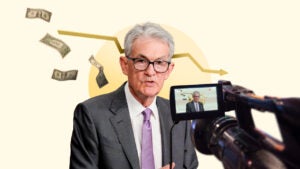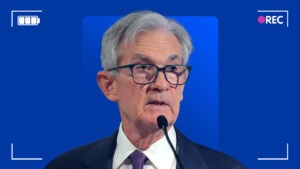Preview of the Fed meeting: 4 key things to watch as officials look to prop up economic recovery

The Federal Reserve pioneered a groundbreaking change to the way officials steer the world’s largest economy at the end of August, setting the stage for a longer stretch of rock-bottom interest rates.
But now may be the hardest part, both for consumers and the U.S. central bankers themselves: Putting that new policy into action, and being prepared to wait.
The Fed’s new groove — which will come into focus at its next rate-setting meeting on Sept. 15-16 — involves letting the job market run hotter and backing away from preemptively lifting rates to ward off inflation.
But it’s bound to only come into the picture years from now, as the financial system slowly bounces back from the devastating and unrivaled coronavirus-induced downturn.
“It’s a difficult balancing act, and there isn’t a whole lot more the Fed can do other than jawbone,” says Kim Rupert, managing director of global fixed income analysis at Action Economics. “It’s more of a wait-and-see stance at this point.”
Here’s four key topics to keep an eye on ahead of the Fed’s two-day rate-setting announcement and what they mean for you.
1. Fed’s new framework: Run the job market hot and worry about inflation later
The Fed’s policy shift was years in the making, with Fed Chair Jerome Powell spearheading a thorough audit starting in late 2018 of how the U.S. central bank communicates and achieves its twin goals of maximum employment and stable prices.
It arrived at a time when officials were puzzled by shifting dynamics in the broader economy. As Americans find work, an economic theory that’s become doctrine at the U.S. central bank suggests that wages and prices should rise, thus boosting inflation. But even as unemployment descended to 50-year lows, wage growth didn’t materialize and price pressures didn’t sustainably rise to officials’ 2 percent target.
The review inspired the Fed to look underneath the hood of the U.S. labor market. And it showed them that the job market wasn’t as strong as headline figures suggested.
When the Fed first started hiking rates back from the zero-lower bound in 2015, unemployment was sitting at 5 percent, lower than the 5.3 percent average unemployment during the previous expansion. Yet, Hispanic and Black unemployment was at a near 20-year high, with the latter nearly twice as high as whites. Meanwhile, only about 80 percent of prime-age workers were in the labor force by December 2015, the lowest since the 1980s. That gauge didn’t return to previous pre-recession levels until February 2020, though it was still lower than the record highs that prevailed in the late 1990s.
How quickly the Fed raises interest rates has consequences for the labor market. Make it more expensive to borrow money, and you could risk tapping the brakes on the economy too soon, keeping more people out of work and making it harder for new entrants to ride the wave of job gains.
“To call something hot, you need to see some heat,” Powell said in July 2019 testimony before Congress. He pointed out how participation rates suggested that there was still slack in the labor market and also referenced how individuals in some demographics were facing fewer job prospects than white and Asian workers.
Nearly two weeks later, the Fed would go on to make its first rate cut since the financial crisis, and by October, it would have made two more. Officials spoke of new learnings and realizations about the labor market, how unemployment could fall to new historic lows without triggering inflation.
The Fed has all but codified that strategy by making it part of its official mandate. In the official text, officials say they’re going to shoot for inflation that “averages” 2 percent over time. Essentially, it means they’ll be willing to let inflation rise higher than 2 percent, to make up for times when it’s fallen below that goalpost.
And the shift matters for today’s pandemic-ravaged labor market because prosperity has become even more uneven, with low-wage, vulnerable workers bearing the brunt of the financial pain, while higher-paying industries able to work from home have been left relatively unscathed.
“Clearly with the change in inflation, the Fed is set up to be at zero for a while,” says Brian Rehling, head of global fixed-income strategy for Wells Fargo Investment Institute. “They’ll be much less likely to try to get in front of any type of inflation increase and much more likely to tolerate inflation, given that we had been below target for such a long period of time.”
2. New projections, but the biggest news has already happened
Officials in September will also freshen up their economic and rate forecasts, though the framework review might have stolen most of its thunder.
U.S. central bankers will pencil in where they see rates heading through 2023 in their widely-watched “dot plot” chart, which is expected to show rates at zero all the way through that time frame. Yet Fed watchers and economists alike already envisioned rates staying at zero, long before the Fed’s framework review solidified that hunch.
“It’s going to be low rates as far as the eye can see,” says Greg McBride, CFA, Bankrate chief financial analyst. “The Fed had rates at zero for seven years during the last recession. That may very well end up being the blueprint for what we see this time.”
The Fed’s economic projections for unemployment, growth and inflation were last updated in June, and one estimate turned out to be overly pessimistic. Officials expected a 9.3 percent jobless rate by year’s end, yet nationwide unemployment in August fell to 8.4 percent, bolstered by solid employment reports the past four months.
“The Fed, as well as most in the economics profession, really overestimated the extent of the drop in the economy and underestimated the bounce back that we’re seeing,” Rupert says.
If you’re trying to see where rates might be heading, you’ll want to keep an eye on officials’ projections for inflation.
“Obviously, if over many years their targets are at or below 2 percent, then there would be no expectation for rate increases over that period,” Rehling says.
3. The recovery’s momentum remains a question mark
But the Fed will still have to ready itself for the years ahead — and there could be plenty of trials.
Officials have long said that the U.S. economy’s rebound depends on the virus. Fears of a second wave loom as the colder weather approaches, pushing more people indoors. Other big question marks include the flu season, holiday travel and spending, which could make or break the pace of the recovery in the fourth quarter.
The U.S. economy has brought back about 47 percent of the 22.2 million jobs lost at the height of the pandemic, but permanent job losses are on the rise. Business failures are also a risk the longer consumption is subdued. Meanwhile, other ailing industries on the front lines of the coronavirus, such as hospitality and tourism, are unlikely to make a full recovery anytime soon.
“We do think it will get harder from here, because of those areas of the economy that are so directly affected by the pandemic still,” Powell cautioned in a September interview with NPR. “There’s going to be a long period, we believe, where we’ll have to take our time and see those people get back to work.”
“It’s a little bit like dropping a basketball off of a seven-story building,” McBride says. “It bounces highest on the first bounce, but not nearly as high on the second, third and fourth bounces. As the economy reopened, that type of rapid snapback that we had seen in activity and employment is unlikely to be sustained at the same pace.”
4. Watch for the subtle, yet pointed call for more fiscal action
There’s good and bad news. The Fed is going to be patient before lifting rates as it waits for the economy to pick back up. But the bad news is, it might not have much ammunition left in its arsenal to stimulate the economy if it ends up needing more help — at least in the way that help might be needed.
Officials say they have more firepower left, and they do. They could ramp up bond-buying and expand their special lending programs and repo operations.
But the power to enact more pointed and targeted aid rests on Capitol Hill. That might mean Powell in his post-meeting press conference echoes previous calls for both the Fed and Congress to do more, which some Fed watchers take as a way of diplomatically saying both entities have to bear the same weight.
“They’ve pushed rates as low as they can push them, they’ve lent to everybody under the sun practically, but that alone is not going to cure consumers and their finances,” McBride says. “The Fed has largely done all that they can do, and that’s why we keep hearing them point the finger at Congress, urging them to provide direct assistance to consumers and businesses. That’s beyond the limits of what the Fed can do.”
Lawmakers haven’t sat still, though some may say they haven’t moved as quickly and aggressively as the Fed because it’s not in their makeup. A major relief package signed into law at the end of March sent direct $1,200 stimulus payments to low- and middle-income adults and boosted Americans’ weekly unemployment checks by $600. But that aid ended at the end of July, and lawmakers have since been gridlocked with different priorities in a battle for more financial support.
President Donald Trump took executive action to circumvent a gridlocked Congress by partly reinstating those benefits, among other measures, but questions about implementation and constitutionality have lengthened the timeline before those payments make it into Americans’ wallets.
The House of Representatives passed a fourth major bill in mid-May, but it never made it through the Republican-controlled Senate. Meanwhile, a skimmed down Senate Republican package failed to make it through Senate Democrats on Thursday. Analysts say it means more aid before the 2020 presidential elections is unlikely.
“There’s only so much the Fed can do,” Rupert says. “It doesn’t have any other ways to stimulate the economy, other than to keep interest rates low and to be a lender of last resort.”
What this means for you
Borrowers will likely have more time than they thought in today’s current low-rate environment, with interest rates holding at near-zero for years to come.
The Fed’s new policy is in part meant to secure cheaper mortgages and loans for consumers, which will hopefully foster more job and economic growth down the road.
Consider refinancing your mortgage, which might shave hundreds of dollars off your monthly payment. And if you’re thinking about buying a home, now would be the time, with mortgage rates at record lows and likely to fall further — though the Fed’s new inflation-friendly policy might increase rate volatility down the road.
Savers, however, won’t be cheering this new policy, especially if it means higher inflation. But in the context of the current environment, think of your deposits as a cash cushion, rather than a way to make a decent return. Experts typically recommend storing about six months’ worth of expenses. Make sure those funds are liquid and accessible in a savings account.
“Your emergency fund is not something you have for the prospect of fabulous returns and great wealth,” McBride says. “That is your sleep-at-night money. It’s the buffer between you and high interest-rate debt when unplanned expenses occur. And if interest rates are really low, then savers just have to take what’s given to them. You can’t go chasing risk to get a higher return from money that you will need in the short term.”






